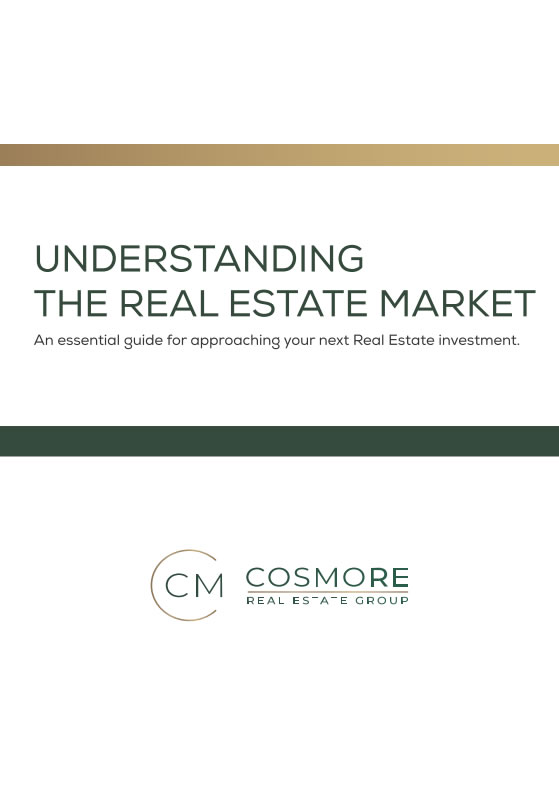The honeycomb theory is a valid representation of an economic and social phenomenon that recent history has observed with constant repetition in the real estate market of the last 50 years, with repetitive up-and-down but with an always ascending trend in the medium/long term. There have been few notable exceptions to this trend, and we will briefly analyze their characteristics below.
Starting from the beginning of the ‘80s, and analyzing the official data provided by the FHFA1, we can see in the two graphs below the trend of average prices of real estate transactions in the last two decades: from 1980 to 2000 (Graph 1) and from 2001 to 2021 (Graph 2).


It is immediately evident that the short term is characterized by continuous fluctuations, with increases and decreases in sale prices that follow one another and alternate, but always with a general positive trend in the medium/long term.
A visually immediate idea is represented by the five-year period 94-99, not characterized by unexpected and relevant external events that have influenced the market. It seems evident, therefore, that with stable conditions, what is described above is the normal behavior of the real estate market.
What has been observed confirms that the general growth of the economy always corresponds to a growth in real estate, but with continuous and repeated seemingly inevitable “ups and downs”, pointing to an upward trend.
Two obvious exceptions to this upward trend occurred: the first, between 1989 and 1992; and the second, of remarkable magnitude, between 2007 and 2014.
The first phase of market stagnation – although brief – coincided with the most intense period of the Savings and Loan Crisis (S&L Crisis). This was the failure of more than 1,000 savings companies between 1986 and 1995 (or about one-third of the total in the United States).
The crisis was attributed to a number of causes, including the inadequacy of regulations to market conditions, speculation, moral hazard caused by the combination of taxpayer guarantees along with deregulation, the rampant corruption and fraud, and the implementation of greatly relaxed and expanded lending standards, that led banks to take on too much risk balanced by too little capital on hand.
These were all factors that contributed to the recession of 1990-1991, when – as we see in the chart above – the real estate market temporarily halted its climb.
In the same years, the Gulf War took shape, with the major events taking place between 1990 and 1991, instilling further uncertainty in investors and consumers.
This was undoubtedly a particular period in history when elements unrelated to the real estate market heavily influenced the economy at large.
Something similar, and far worse, happened between 2007 and 2012, with its aftermath until 2014, and is now known as the U.S. Housing Bubble, followed by the Great Recession.
The events of 2007 are very recent history and probably familiar to readers in every industry. In order to simplify, we can limit ourselves to recalling that at the beginning of the 2000s it became very common in the United States for consumers and banks to agree on mortgages without home equity, that is, above the value of the property.
Some banks used to lend at 120% or more to allow the buyer to buy the house and then do renovations or other expenses. This practice initially generated a wave of real estate purchases and great enthusiasm among investors and families; however, after a certain period of time, they came up against serious inflation and the difficulty of meeting debt repayments.
At the same time, the market experienced a downturn in prices, and the average wages of American families did not have a corrective increase in inflation sufficient to stop the crisis.
In such a scenario, normally a savvy investor or consumer would try to sell the property at the best possible price in order to cover the mortgage and preserve his equity. But at that particular time, a great many debtors had no equity at all; rather, selling the properties through traditional channels would have resulted in only additional costs – commissions, closing costs, and paying the balance owed to the bank in addition to the value of the property. In other words, the debtors did not see the sale of the property on the traditional market as a possible salvation option. So the vast majority quietly decided to let the properties go on foreclosure, knowing that it would be the most painless option for them.
The huge amount of foreclosed properties further depressed an already ailing market, causing prices to plummet and the amount of real estate supply to far exceed demand – demand that was further compromised by increasingly restrictive bank policies and the recession.
This scenario is unique in recent history and occurred at that precise moment because of the extreme flexibility – and greed – with which some banks had regulated their credit policies.
With the exception of these two cases, one brief and concentrated in the sector (1990-1992), the other long and widespread throughout the economy (2007-2012), the trend of two decades of the real estate market has confirmed the rule of repeated oscillations with a constant upward trend.
1 The Federal Housing Finance Agency (FHFA) was established by the Housing and Economic Recovery Act of 2008 (HERA) and is responsible for the effective supervision, regulation, and housing mission oversight of Fannie Mae, Freddie Mac (the Enterprises) and the Federal Home Loan Bank System, which includes the 11 Federal Home Loan Banks (FHLBanks) and the Office of Finance. Since 2008, FHFA has also served as conservator of Fannie Mae and Freddie Mac.



















